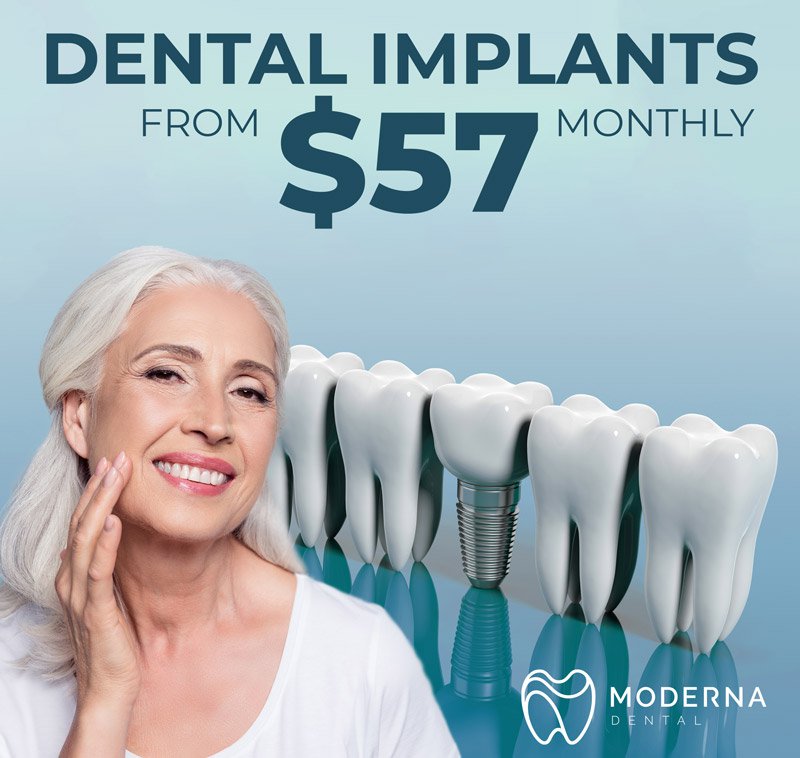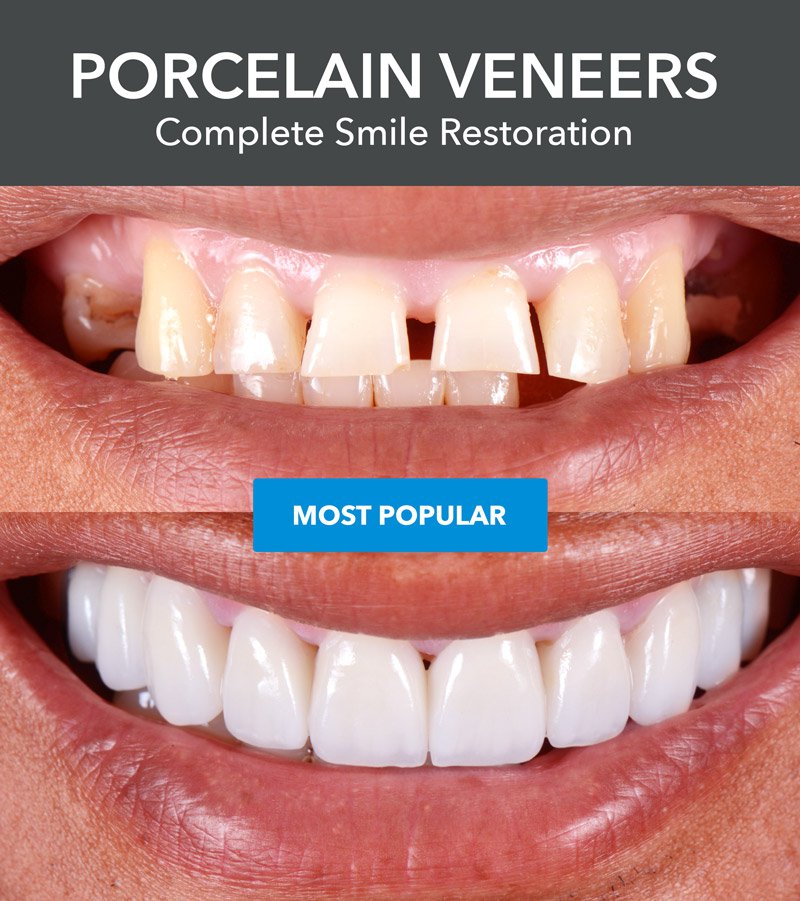Comprehensive Dental Care for Miami Patients
Curious about what all is included with comprehensive dental care? Get the facts from Moderna Smile in Miami.

 Chances are when you visit your dentist for an annual or bi-annual checkup, you will likely receive a standard examination and cleaning. These are beneficial in preventing tooth decay and gingivitis, but really only scratch the surface in terms of understanding and treating your full oral health. To get a complete picture of your oral health, you may need a comprehensive dental exam.
Chances are when you visit your dentist for an annual or bi-annual checkup, you will likely receive a standard examination and cleaning. These are beneficial in preventing tooth decay and gingivitis, but really only scratch the surface in terms of understanding and treating your full oral health. To get a complete picture of your oral health, you may need a comprehensive dental exam.
At Moderna Dental in Miami, we practice comprehensive dental care. The first step in creating a comprehensive care plan is a comprehensive examination. If you are a new patient, have a pre-existing oral health condition, or there are gaps in your patient record, a comprehensive dental exam will likely be recommended to you.
Are you ready to get your oral health on the right track? Call Moderna Dental for an appointment, or read on to learn more about what all is involved with having a comprehensive dental exam performed.
Why You Should Consider a Comprehensive Dental Exam
Through a comprehensive dental exam, the dentist can examine and consider all facets of a patient's oral health, such as screening for oral cancers and periodontal diseases. Your comprehensive exam may also include recommendations to improve the appearance of your teeth, which in turn can also enhance your personal wellbeing.
Since comprehensive dental exams guide patients’ treatment plans, most dentists require a comprehensive exam during the first appointment.
How Long Does a Comprehensive Exam Last?
Not including the intake questionnaire, most comprehensive dental exams can be completed in less than an hour-and-a-half, which is slightly longer than a typical checkup and cleaning.
How Often Should I Have a Comprehensive Exam?
Most dentists recommend a comprehensive dental exam during the first visit, then every four to five years, depending on the oral health of the patient. As a practice that emphasizes comprehensive dental care, Moderna Smile performs comprehensive dental exams as part of the new patient orientation.
At the conclusion of your comprehensive exam, the dentist or hygienist will discuss their findings and recommend a treatment plan. A checkup schedule will also be recommended to you. This will be based on certain oral risk factors. The dentist or hygienist will also make recommendations on how you can improve your oral health at home.
As a modern dental office, Moderna Smile has invested in the latest state-of-the-art equipment and technologies. These tools have transformed the patient experience, yielding greater results (and many beautiful smiles).
Health questionnaire
The Questionnaire: Establishing Your General and Dental Health
We gather health histories to better gauge the general and oral health of patients. Your intake questionnaire plays an important role in this process. The patient questionnaire will include questions about allergies, health concerns, previous surgeries, hospitalizations, as well as alcohol and/or tobacco use. We will also ask about any medications or supplements you may be taking, as these can affect how we approach certain treatments.
Intraoral and extraoral exam
Your comprehensive exam will include intraoral (inside the mouth) and extraoral (outside the mouth) examinations.
During the intraoral exam, the dentist will likely examine the palate (roof of the mouth), tonsils, buccal mucosa (soft lining of the mouth), labial mucosa (inner lining of the lips), as well as the tongue and floor of the mouth.
As part of the extraoral examination, the dentist may also examine the lymph nodes, salivary glands, and thyroid. Facial symmetry will also be examined, as facial asymmetry can be a symptom of certain jaw and craniofacial conditions such as temporomandibular joint disorder (TMJ) and malocclusion (incorrect teeth position when the teeth meet). The dentist will also look for signs of neoplastic growths (tumors) or muscular atrophy/hypertrophy, which can also be displayed as facial asymmetry.
Full-Mouth X-ray Exam
Whether or not a comprehensive dental exam is performed, most new patients will receive a full-mouth X-ray exam. This type of examination includes a series of 20 to 24 X-rays, including bitewing and periapical X-rays. Full-mouth X-rays are usually repeated every four to five years.
Periodontal Charting (Gum Disease Screening)
As part of regular checkups and comprehensive exams, the dental team will perform a gingival screening known as periodontal charting. If you don't know what's going on then the experience can seem unusual; the dentist will poke at your gums and then state a number to the dental assistant, who will then write down or enter the number into a computer spreadsheet.
During periodontal charting, the dentist is poking the gums to determine the thickness of the gum pocket and how well the gums respond to the sharp pressure of the probe. The numbers the dentist is rattling off are actually the depths (in millimeters) of the gum pockets. For instance, if you hear the number one, this means that the surface of the gum pocket is one millimeter from the jawbone. Generally, hearing zero through three means you're in great shape, whereas anything more than three or four millimeters could signify the presence of inflammation in the form of gingivitis.
Dentists use periodontal charting to determine the health of the gums. They do this by examining the thickness of the gums in relation to the jawbone. Many patients with gum disease (periodontitis) are asymptomatic, meaning they do not have any obvious symptoms of the condition. Diagnosing gum disease early is important — not just for your oral health, but also your general health. Many studies have shown a correlation between periodontitis and respiratory diseases, osteoporosis, diabetes, and heart disease, the number one fatal health disorder in the United States.
Check out our gum disease page for additional information on the symptoms of gum disease and how it can affect your health.
Occlusal Exams
Having a correct bite is more important than you may realize. The occlusal exam determines how well your teeth come together. An improper bite (malocclusion) causes excessive wear on certain teeth, but can also lead to tooth loss and a collapsed smile. Plaster models are sometimes made of the teeth in order to gain more insight into the patient's level of malocclusion.
Examination of Previous Dental Work
During your comprehensive dental exam, the dentist will evaluate the condition of any previous dental work. These can include fillings, bridges, implants, and other types of restorations.
Oral Cancer Screening
Each year there are approximately 50,000 cases of oral squamous cell carcinoma in the United States, claiming the lives of nearly 10,000. Many patients who have never had an oral cancer screening are surprised to learn that dentists are at the forefront of detecting certain cancerous and precancerous lesions of the mouth, neck, and throat areas. Early detection is important.
According to the American Cancer Society and studies published in SEER Cancer Statistics Review, there is a direct correlation between diagnosing the disease early and patient survival rates. What is an oral cancer screening like? Oral cancer screening is completely pain-free. During your oral cancer screening, the dentist will examine areas of your gums, throat, palate, lips, tongue, and other areas of the mouth to look for signs of oral cancer cells.
Dental Impressions
If you are planning on having bleaching trays or a nightguard fabricated, the dentist may take dental impressions during your visit. When an impression is made, a dental associate will place a U-shaped tray into the patient's mouth containing a gel-like substance (usually alginate or polyvinylsiloxane). Alginate actually originates from the cellular walls of certain seaweed species, which gives it a distinctive taste. After a few minutes the impression gel will harden and the dental assistant will remove the tray.
Oral Prophylaxis
All depending on your preference and state of your oral health, an oral prophylaxis may be performed during your comprehensive exam. This procedure has gained added importance over the past few decades as the medical community has reached a greater understanding of how oral plaques and tartar can negatively affect vital organs, especially the cardiovascular system. Oral prophylaxis involves cleaning the teeth to remove plaque and tartar.
This practice is especially useful in removing buildup under the gumline and in between teeth. Oral prophylaxis is generally performed by an oral hygienist who will use either a dental scaler or ultrasonic scaler to dislodge plaque and tartar. A prophy cup is then used to polish the surfaces of the teeth to make them easier to clean with a toothbrush and floss. Oral prophylaxis also works well to remove surface stains, but is predominantly performed to prevent tooth decay. Most oral prophylaxis appointments last an hour or more.


